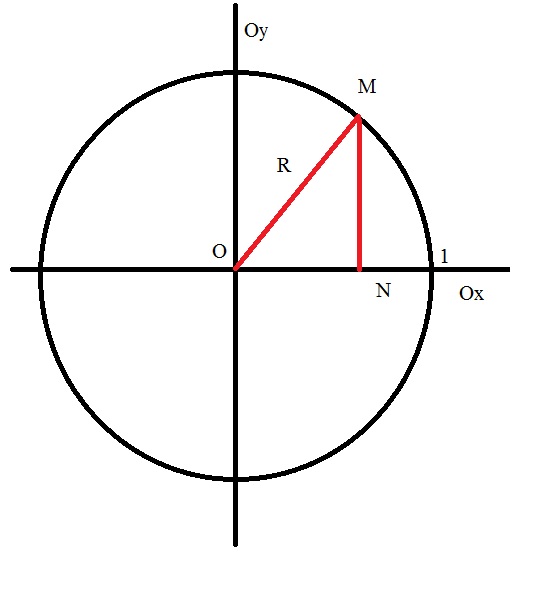You will need
- Textbook on trigonometry.
Instruction
1
In order to Express the tangent of an angle using a sine, you need to recall a geometric definition of tangent. So, the tangent of an acute angle in a right triangle is the ratio opposite over adjacent.
2
On the other hand, consider a Cartesian coordinate system where the unit circle is drawn with radius R=1 and with center in the origin. Take counterclockwise rotation as positive and the opposite direction negative.
3
Mark a certain point M on the circle. It will drop a perpendicular on the axis Oh, call it point N. get the triangle OMN, in which the angle ONM is a direct.
4
Now consider acute angle MON, by definition of sine and cosineand an acute angle in a right triangle
sin(MON) = MN/OM cos(MON) = ON/OM. Then MN= sin(MON)*OM and ON = cos(MON)*OM.
sin(MON) = MN/OM cos(MON) = ON/OM. Then MN= sin(MON)*OM and ON = cos(MON)*OM.
5
Returning to the geometric definition of the tangent (tg(MON) = MN/ON), substitute the above expression. Then:
tg(MON) = sin(MON)*OM/cos(MON)*OM cut OM, then tg(MON) = sin(MON)/cos(MON).
tg(MON) = sin(MON)*OM/cos(MON)*OM cut OM, then tg(MON) = sin(MON)/cos(MON).

6
From the basic trigonometric identities (sin^2(x)+cos^2(x)=1) Express the cosine, using the sine: cos(x)=(1-sin^2(x))^0,5 Substitute the expression obtained in step 5. Then tg(MON) = sin(MON)/(1-sin^2(MON))^0,5.
7
Sometimes there is a need to calculate the tangent double-angle and half-hearted. Here, too, relations are derived:tg(x/2) = (1-cos(x))/sin(x) = (1-(1-sin^2(x))^0,5)/sin(x);tg(2x) = 2*tg(x)/(1-tg^2(x)) = 2*sin(x)/(1-sin^2(x))^0,5/(1-sin(x)/(1-sin^2(x))^0,5)^2) =
= 2*sin(x)/(1-sin^2(x))^0,5/(1-sin^2(x)/(1-sin^2(x)).
= 2*sin(x)/(1-sin^2(x))^0,5/(1-sin^2(x)/(1-sin^2(x)).
8
It is also possible to Express the square of the tangent of a double angle cosineand or sine. tg^2(x) = (1-cos(2x))/(1+cos(2x)) = (1-1+2*sin^2(x))/(1+1-2*sin^2(x)) = (sin^2(x))/(1-sin^2(x)).
Note
Pay attention to the tolerance range when the solution of equations and inequalities.
Useful advice
Knowledge by heart of the main identities, which will help you to quickly move from one trigonometric function to another.
